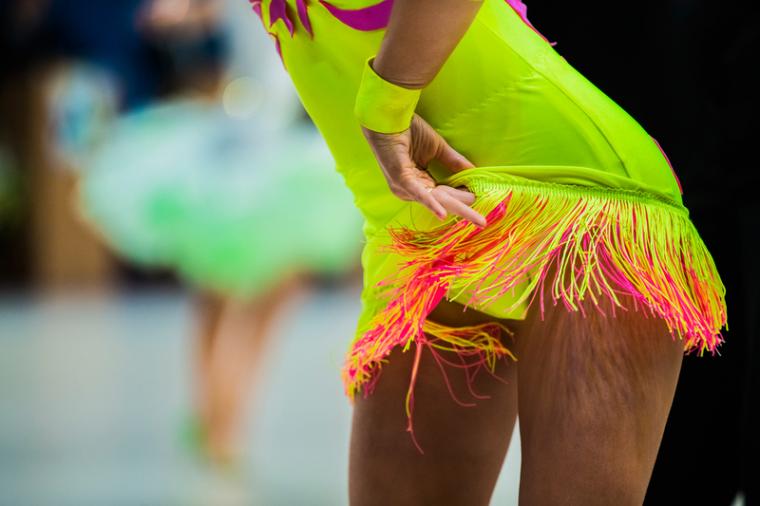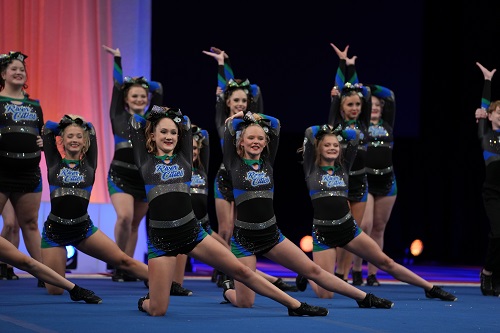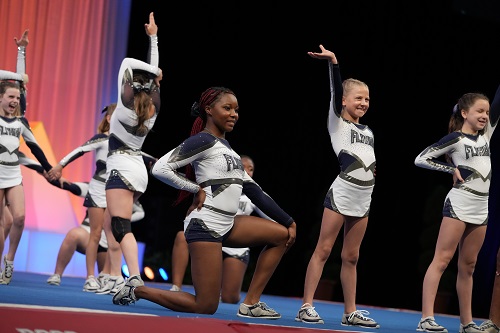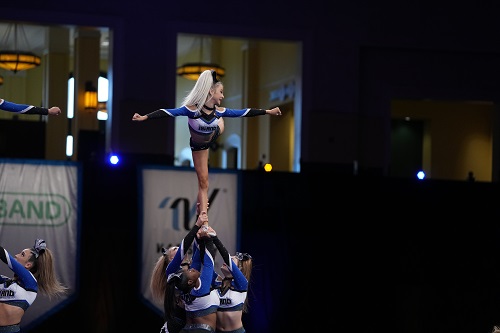

When Varsity Spirit, a major player in cheerleading, dance team and band apparel, camps and competitions, made the decision to host its D2 Summit Championship, with more than 800 teams, in Orlando in mid-May, it marked a significant stride forward. The organization had hosted its last major championship in that city in March of 2020 just as everything was shutting down – something that was a remarkable story in itself.
“For us, the pandemic hit right before one of our events at Disney last year,” recalls Bill Seely, President of Varsity Spirit. “I was working late at night, and I had the TV on in the background. I was hearing the news and it was all about this international pandemic and the fact that everything was being called off. All I could think was, Uh-oh. We’re supposed to go down to Disney.”
With cheer squads from around the country already arriving in Orlando for the competition, Seely and his executive team went into action.
“We landed at 12:30 a.m. and we gathered our executive staff. Disney had just made an announcement they were closing their parks on Monday. We met that whole night looking at the guidance from the CDC and creating protocols we could use to keep everyone safe.”
The Varsity Spirit executive staff came up with the idea of creating special areas for families and teams that had traveled together, in order to lessen the potential for cross-contagion. Hand sanitizer stations were arranged for, and were strategically placed, and only the fans and families who had come with traveling squads were to be allowed to be in the arena – and only while their squads were performing. (For comparison purposes, that meant an arena that generally held at least 5,000 fans would hold 200).
Having set up protocols and created as many safeguards as possible on an incredibly tight timeline, the Varsity Spirit staff was exhausted – but prepared.
“We left our meeting at 4 or 4:30 a.m., got about a half-hour of sleep, then brought our full staff together – it takes about 250 people to run this event – and we spent two hours walking through everything. We did that in the morning and then we went out and executed the event.”
While many teams had elected not to attend, a total of 5,000 athletes did compete, making it one of the last, and biggest events before the pandemic took hold.
“After that, we had to cancel the rest of our events, all the way to April of 2021,” Seely recalls.
 The organization helped keep athletes engaged (and “helped local cheer gyms keep their doors open,” adds Seely) by offering a virtual series of competitions. Varsity All Star rolled out five virtual Regional Summit Championships in 2021 that hosted over550teams.
The organization helped keep athletes engaged (and “helped local cheer gyms keep their doors open,” adds Seely) by offering a virtual series of competitions. Varsity All Star rolled out five virtual Regional Summit Championships in 2021 that hosted over550teams.
And every week, the organization refined its protocols, working toward the day when live events could resume.
“What we were really trying to do was stay in front and provide activity during the regular season. There was no place where mass gatherings could really be held, so we were doing what we could.”
And finally, in the spring of 2021, with vaccines in wide use and with COVID on the run, Varsity Spirit could return to live competition – with modifications that turned its stay in Orlando into a marathon.
“We typically have an end of season event for each different discipline of cheer,” notes Seely. “It’s the college championships in January, high school dance in the first week of February, high school cheer in the second week of February and international all-stars the second week of March. We also do The Summit and the D2 Summit. Because of COVID, though, we made the decision to move the December, January, February and March events to an April/May window. We held 10 events in a 40-day span. Our folks just lived in Orlando for all that time – they rolled up their sleeves and toughed it out.”
That many events, that many athletes and that many divisions meant taking a few special precautions. Registration packet pickup, for example, created a logistical challenge.
“We didn’t want to have big, long lines, like you might typically find. We worked with our partners at Disney – and let me say they were a great help – to use a parking lot for one of the hotels. We had an online scheduling system where people could register for a time to come pick up their packets. There were four drive-through lanes, and people were able to get their packets without getting out of their cars. We moved 18,000 packages in a three-day period and the average wait time for a packet was three minutes.”
All star cheerleading programs traveled from across the U.S. to compete at the Walt Disney World® Resort, in the AdventHealth Arena at ESPN Wide World of Sports Complex, the first-ever building dedicated exclusively to hosting cheer and dance events.
The D2 Summit, which is traditionally held in mid-May (and which obviously was not held last year), is the main and final competition of the season for cheer gyms with less than 125 athletes. (It differs from The Summit, which tends to have larger programs). Put together, both events bring in a little over 1,600 teams with 36,000 athletes. This year, 800 teams competed in the D2 Summit. (In normal times, there would be approximately 160,000 spectators; however, because of health concerns, not all were present in the arena at the same time, with the venue being cleared between waves of competition).
Masks were worn when teams were not practicing or competing and were required at all other times on Disney properties.
“It was a little unusual, but the kids had overall great time,” says Seely, “and best of all, we haven’t gotten one single case of COVID reported to us.”
The reception was overwhelmingly positive. “You could see the joy on the kids’ faces – they were finally able to be around their friends, their parents, other teams, all doing what they loved. We had an outpouring of positive comments from coaches and cheer gym owners, all of whom were really grateful that we had stepped out and done this. It was obvious it was the right thing to do. We also saw it from the hotels, the venue staffs, the custodians – everyone was so glad to be back at work and so grateful that we were doing this.”
And if anything, COVID appears to have made the sport stronger, driving participation upwards.
“We’re seeing an increased participation in the youth sports we’re part of – more kids in gymnastics and cheer, more kids involved in school programs.”
 Band and dance, two other areas of Varsity Spirit’s involvement, are also seeing upticks, and Seely believes it comes out of a wish on the part of kids to get out, connect with one another and participate. And to that point, he thinks sports, when done safely, can be only beneficial.
Band and dance, two other areas of Varsity Spirit’s involvement, are also seeing upticks, and Seely believes it comes out of a wish on the part of kids to get out, connect with one another and participate. And to that point, he thinks sports, when done safely, can be only beneficial.
“During the pandemic, we cancelled 104 events. It had a significant impact on our business, but we were still learning about the virus and it was the responsible thing to do. The whole time, we were studying the news about new cases and looking at the medical journals. We didn’t want to overreact but when we do events, we’re doing them for young people and their families, so safety is at the forefront.”
But seeing reports of the toll the protracted isolation was having on children’s mental and emotional wellbeing, including increased rates of depression and even suicide, made Seely and his team more determined than ever to return the sport to live competition – and in a safe and responsible manner.
“We felt like it was more important for the kids to have events than to not have events. It was hard – we were putting in 70-hour weeks – but it paid off. My advice to other event owners would be to understand all the risks and make sure they’re reasonable.”
And COVID, he notes, is an experience for which there was no template.
“It was new to our generation. I’d say 9/11 was one also but this had a significantly bigger impact on the globe, lasted longer and created more confusion.”
It was also a teaching experience.
“Once you’ve created the safest experience possible, you need to just go for it. You keep learning as you go along, regrouping, fixing things, learning how to do it better next time, until you can create the kind of event you want to create. You can look back on it and appreciate the hard lessons you had to learn to survive – but also the way you overcame those challenges to keep your athletes happy.”

